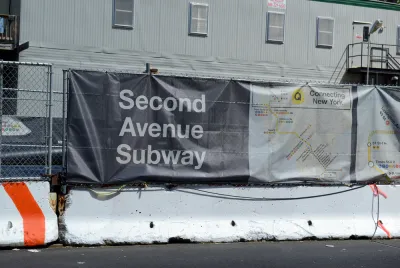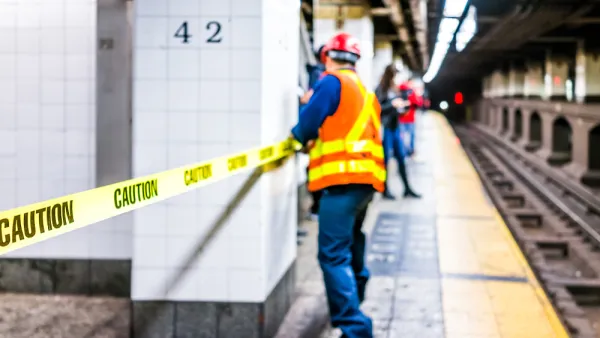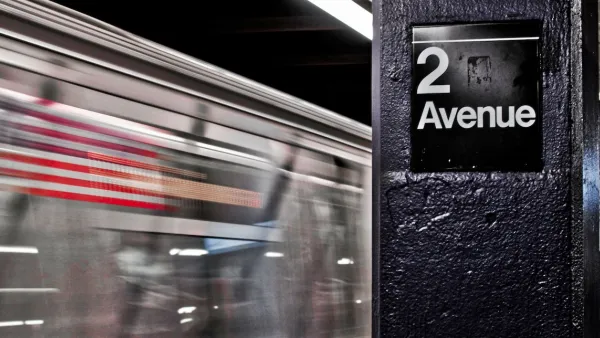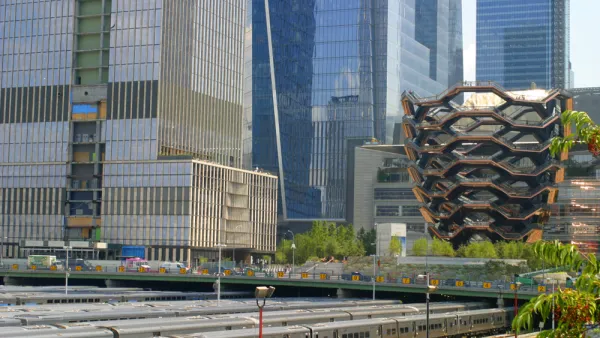There will be a lot of hoopla when the Second Avenue Subway opens in Manhattan on the first day of 2017. Some writers are making sure that one important detail isn't getting lost in the celebration.

"On January 1, the Second Avenue subway extension will open about 100 years after it was first proposed — or at least, a little bit of it will, running from 63rd Street to 96th Street," writes Josh Barro.
According to Barro, the critical component of the story about America's newest large infrastructure project is the cost: at $4.45 billion for two miles, the project is "the world's most expensive subway ever built."
"The bad news is we have been overpaying for our underground infrastructure for stupid reasons," writes Barro. "The good news is we can avoid overpaying in the future with smarter, more strategic choices."
The article goes into a feature-length detail to back those claims, citing the World Trade Center Transportation Hub, opened earlier this year at the cost of $4 billion as another prominent example of the same set of problems. With both these examples in mind, argues Barro, "[t]he main thing that seems to set apart American transit projects is engineering choices — especially choices to build bigger stations than necessary, with more complicated designs than necessary, deeper underground than is necessary."
Vincent Barone provides a similar critique in a separate article released before the subway's opening. Baron's coverage explains the viewpoints of transportation experts who "believe that the comparatively high price of subway construction in New York City could, in the short term, hinder further necessary expansion needed to support its growth."
FULL STORY: New York's incredibly expensive new subway explains why we can't have nice things

Analysis: Cybertruck Fatality Rate Far Exceeds That of Ford Pinto
The Tesla Cybertruck was recalled seven times last year.

National Parks Layoffs Will Cause Communities to Lose Billions
Thousands of essential park workers were laid off this week, just before the busy spring break season.

Retro-silient?: America’s First “Eco-burb,” The Woodlands Turns 50
A master-planned community north of Houston offers lessons on green infrastructure and resilient design, but falls short of its founder’s lofty affordability and walkability goals.

Test News Post 1
This is a summary

Analysis: Cybertruck Fatality Rate Far Exceeds That of Ford Pinto
The Tesla Cybertruck was recalled seven times last year.

Test News Headline 46
Test for the image on the front page.
Urban Design for Planners 1: Software Tools
This six-course series explores essential urban design concepts using open source software and equips planners with the tools they need to participate fully in the urban design process.
Planning for Universal Design
Learn the tools for implementing Universal Design in planning regulations.
EMC Planning Group, Inc.
Planetizen
Planetizen
Mpact (formerly Rail~Volution)
Great Falls Development Authority, Inc.
HUDs Office of Policy Development and Research
NYU Wagner Graduate School of Public Service




























